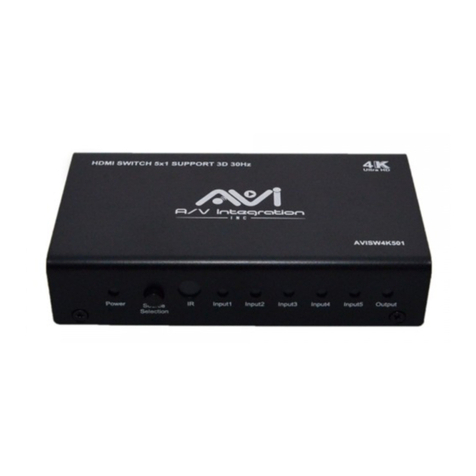2
SECTION1INTRODUCTION
1.1SystemDescription
Thisinstruction manualisfortheAVI-PDU Series smart twowireRFadmittance levellimit switch,whichisusedfor
mostlevelmeasurementsandcontrolandissuitableforalmostall industrialorcivilapplicationswheremeasuringlevelof
liquids,powders,slurries andinterface.Theequipmentcanbeeitherinstalledindoororoutdoor,nospecialmounting
requirementsneeded.
Theequipmentisalevelswitchcomprisedofoneelectronicunit,oneconnectingcoaxialcableand onerigidorcable
sensingelement(and alsoit couldbecalledprobe).These componentscanbeconnectedinanintegralconfiguration ora
remoteconfigurationwhichallelectricalcomponentsaremountedawayfromthemeasuringpointandthesensingelement.The
sensingelementcanbemanufacturedofmanydifferentmetalsand insulatorsdependingonthespecificapplication.See figure
1.1as AVI-PDU series integralsystemscheme.
Figure1.1AVI-PDU series RF levelswitch
TheAVI-PDU series RF levelswitchisstrictlyfollowedtheInternational/Chinese standardswhichlistbelow.
1.2OperationPrinciple
RadioFrequencyadmittance leveltechnologyusesabasiccapacitance technology todetectthedifference inmaterials,i.e.
air/powder,air/liquid,oil/water.Butithas advancedfeatures forrejectingcoatings,morereliableand stableoperation,higher
accuracyand remoteelectronics.
RadioFrequencyadmittance technologyemploysacapacitance bridgeand differsfromcapacitance technologyinthe
electronics;cableandsensingelementuses adrivenshieldcircuittostabilize thecoaxialcable.Theelectronicunit smeasuring
(probe)signalisalsopassedthroughaparallelin-phase amplifierinternally.Thisadditionalsignalisconnectedtotheshieldof
thecoaxialcableand thenispassedtothesensingelement sshieldconnection.Thisdrivenshieldamplifierisanin-phase
amplifierwithagainof1.Thesignalon theshieldhas thesamepotential,phase,andfrequencyas themeasuringsignalbutis
electricallyisolatedfromthemeasuringsignalandmeasuringcircuit.Since thecenterwire&shieldwireofthecoaxialcable
havetheaboverelationship,thereisnopotentialdifference betweenthem.Nopotentialdifference meansthatnocurrentflows
betweentheconductors,and no currentflow(leakage)fromthecenterwiretotheshieldmeansthereisno capacitance between
them(capacitance equalzero.)Asaresult,build-up onthesensor,cablelengthandcabletemperaturehaveno affecton the
measurement.Aseparateground wireconnectstheprobegroundtotheelectronicamplifierground.




























